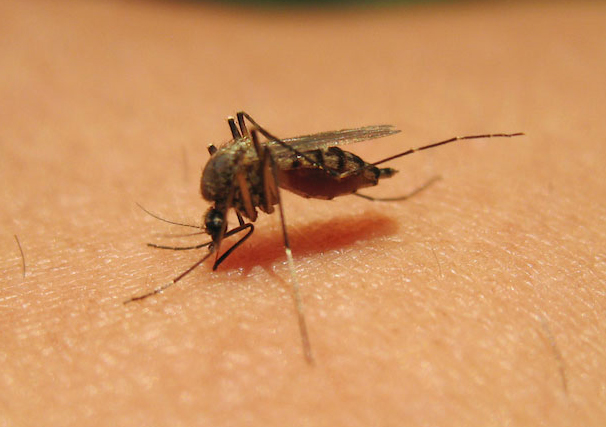The first human case of Eastern equine encephalitis of the season, only the second reported in Connecticut history, has produced a chorus of caution from public health officials, medical professions and local communities.
The message: Protect yourself from mosquitoes, which transmit the disease, and limit outdoor activity in the twilight hours.
“Certainly the more mosquitoes there are, the more risk there is,” says Dr. Virginia Bieluch, an infectious disease specialist at The Hospital of Central Connecticut. “But I think everybody should be taking precautions. If you don’t need to sit outside at dusk you probably want to avoid it right now.”
The state Department of Public Health confirmed Sept. 16 that an East Lyme resident tested positive for Eastern equine encephalitis, or EEE. At the time of the announcement, the patient remained hospitalized after becoming ill the last week of August. The first case in 2013 resulted in the death of an eastern Connecticut adult, though the state did not identify EEE as the cause of death for several months. The patient had been tested for West Nile virus, also transmitted by mosquitoes, but not for EEE before dying.
What Are EEE and West Nile Symptoms?
Both diseases start with headache, fever and body aches. West Nile characteristics can include enlarged lymph nodes and a rash on the chest or stomach. Severe cases of EEE include encephalitis, or swelling of the brain. As it progresses, EEE can cause disorientation, seizures and coma. About a third of EEE patients die from the disease. Survivors can have mild to severe brain damage.
State public health officials say it takes from four to 10 days after a bite from an infected mosquito to develop symptoms.
The cycle begins with birds as the source of infection for mosquitoes, which can then infect horses, other animals and, rarely, humans. From 2009 through 2018, Florida (13) and Massachusetts (10) reported the most cases of EEE.
This year, eight cases have been reported in Massachusetts and one in Rhode Island. Two people, one in each state, have died. Antibiotics are ineffective against viruses, so medical treatment in severe cases typically includes respiratory support, intravenous fluids and prevention of other infections.
The EEE virus has been identified in mosquitoes in 12 Connecticut towns that use traps as part of the state’s monitoring program: Chester, Haddam, Hampton, Groton, Killingworth, Ledyard, Madison, North Stonington, Plainfield, Shelton, Stonington and Voluntown. Horses have tested positive in Colchester and Columbia. The virus also has been detected in a flock of wild pheasants. East Lyme, where a resident was infected, is not part of the state’s monitoring program.
How to Protect Yourself from EEE
All the rules of mosquito-bite avoidance apply here. Remember that mosquitoes carrying West Nile or EEE reach peak activity just after dawn and an hour before dusk. Insect season lasts until the first frost.
Some tips from the Centers for Disease Control and Prevention:
Use Insect Repellent: Look for one of these active ingredients: DEET, Picaridin, oil of lemon eucalyptus, IR3535, para-menthane-diol or 2-undecanone.
Wear long-sleeve shirts, long pants: When extra protection is needed, treat clothing with permethrin, an insecticide that kills or repels mosquitoes. (Do not spray directly on skin.)
Control mosquitoes: Make sure screens on windows and doors have no tears and use air conditioning. Eliminate standing water, where mosquitoes lay eggs. That includes flower pots, buckets and planters. Change water in birdbaths at least twice and check gutters for blockages and backed-up water.
If you’re concerned about a mosquito bite, visit your nearest Hartford HealthCare-GoHealth Urgent Care, 8 a.m. to 8 p.m. and Saturday and Sunday from 9 a.m. to 5 p.m. To make an appointment, call 860.698.4303 or check in online by clicking here.

